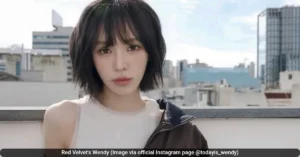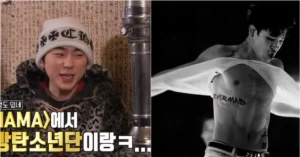K-Pop has taken the world by storm, but for newcomers, the unique terms and phrases used by fans can be confusing. This guide breaks down the essential K-Pop lingo to help you navigate the fandom like a pro.
What Does “Idol” Mean in K-Pop?
In K-Pop, an idol refers to a South Korean celebrity or artist, usually part of a group. They undergo years of training in singing, dancing, and media skills before officially debuting. For example, Krystal from f(x) trained for three years before her debut in 2009 .
Key K-Pop Terms Every Fan Should Know
1. Maknae
The maknae is the youngest member of a group. They often bring youthful energy and are doted on by older members. Jungkook from BTS is famously called the “Golden Maknae” for his all-around talent .
2. Bias and Bias Wrecker
Your bias is your favorite member in a group. An ultimate bias (ult bias) is your favorite across all groups. A bias wrecker is someone who makes you question your bias with their charm or talent .
“Personally, Jungkook from BTS is my bias and ult bias. Who can resist this meme king? Not me, that is for sure!”
3. Main and Lead Positions
- Main roles (Main Vocalist, Main Dancer, Main Rapper) go to the most skilled members.
- Lead roles (Lead Vocalist, Lead Dancer, Lead Rapper) are the second-best in those skills.
For example, in BLACKPINK, Rosé is the Main Vocalist, while Jennie and Jisoo are Lead Vocalists.
4. Center
The center is the member who stands out the most in performances, often positioned in the middle due to their strong stage presence. Jungkook is frequently praised as BTS’s center .
5. Comeback
Unlike in Western music, a comeback in K-Pop means a new release, not a return after a long break. For example, BTS is expected to have a comeback in spring 2026.
6. Fanchant
A fanchant is a synchronized cheer fans shout during performances, often including members’ names. Groups like SEVENTEEN, with 13 members, have long fanchants .
7. Aegyo
Pronounced “eh-gyo,” this term means acting cute through facial expressions, voices, or gestures. Sana from TWICE is famous for her aegyo.
8. Sasaeng
A sasaeng is an obsessive fan who invades idols’ privacy, like stalking or breaking into their dorms. Recently, ENHYPEN faced issues with sasaengs filming them without consent.
9. The Big Three
This refers to the top three K-Pop companies: SM Entertainment (EXO, Red Velvet), JYP Entertainment (TWICE, Stray Kids), and YG Entertainment (BLACKPINK, Big Bang).
More Useful K-Pop Slang
10. Sunbae and Hoobae
- Sunbae: A senior artist with more experience.
- Hoobae: A junior artist or trainee .
11. Anti and Multi
- Anti: A hater who dislikes a group or idol.
- Multi: A fan who supports multiple groups .
12. Hard Stan and Soft Stan
- Hard Stan: Fans attracted to idols in a more mature way.
- Soft Stan: Fans who adore idols for their cuteness .
13. Selca and Selca Day
- Selca: A selfie.
- Selca Day: A monthly event where fans post selfies with their bias.
14. Lightstick and Ocean
- Lightstick: A glowing concert accessory customized for each group.
- Ocean: The effect when lightsticks light up a venue in sync.
15. All Kill and Daesang
- All Kill: When a song tops all major music charts.
- Daesang: A top award given at major music shows.
Why Learning K-Pop Lingo Matters
Understanding these terms helps fans engage better with the K-Pop community. Whether discussing biases, comebacks, or fanchants, knowing the lingo makes the experience more enjoyable.
Also read: Lee Min Ho and Ahn Hyo Seop Face Backlash After Praising BLACKPINK’s Jisoo in Recent Interview










